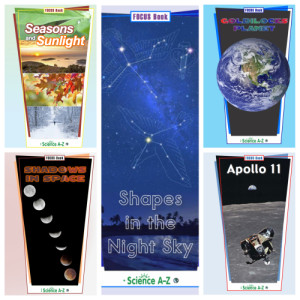My grandson got his official school t-shirt last week: Class of 2027. I don’t want to think about how old I’ll be when he graduates from high school. It does make me think about what the world will be like as he decides what he will do for a living and what problems his generation will face.
I’ve been writing a lot of K-2 science books lately. Some of these may be among the first books conquered by this class of beginning readers. I can’t think of anything more humbling than to imagine that one of these books may spark some child’s interest in science. Or reading. Or engineering. Or learning. Or creating. I’ve always known what an impact books have on children. They changed my life. Seeing this proud little guy in his shockingly orange t-shirt brings this full circle. I never thanked the authors for the books that made a difference to me. But now, I get a chance to pay it forward by creating the best books I can for a new generation of readers.
Writing for K-2 is hard. This is an age where curiosity and, for many, the ability to understand concepts far outweighs reading ability. Verbal vocabulary is far ahead of written vocabulary. Verbal grammar is far ahead of written grammar. I think this makes it particularly challenging to write nonfiction for this age. If your reading vocabulary consists of words such as go, said, play, and cat, you can write an interesting story about a lost pet. I grew up reading fiction. I love it.
But, what do you do if a child is interested in true facts about animation or electrical coils?
The challenge of the K-2 nonfiction author is to write books that interest the reader using the limited reading skills they have. If a reader is interested in a subject, he or she is encouraged to read more — and read better. If they are just learning words, they get bored.
When writing for this age group, I do extensive research. I won’t use all the information, but it gives me a grounding in the concepts. More important, it helps me think of the questions that might be asked by my audience. It’s not enough to know the stuff in the book. I am an expert and need to anticipate questions related to the focus of the book. As I research, I narrow my focus to three things:
1. What is the main, concrete concept. Example: What is an eclipse? It is a shadow.
2. What are simple examples that explain the concept. Example: Someone walks between the light and your book. They make a shadow on your book.
3. Why is this interesting? Example: You can see Earth’s shadow! This is how you do it.
Now, I can fill in extra material depending on the reading level I am targeting. Sound simple? Your challenge: Try answering questions posed by today’s K-2 kids. How does a computer mouse work? What are the seasons on Mars? How do you make a hologram?

I think I have learned as well as refreshed what I knew about science form k-2 books, the ones my kids read back when. I agree that they have a place of honor not only for a school library, but also at home.